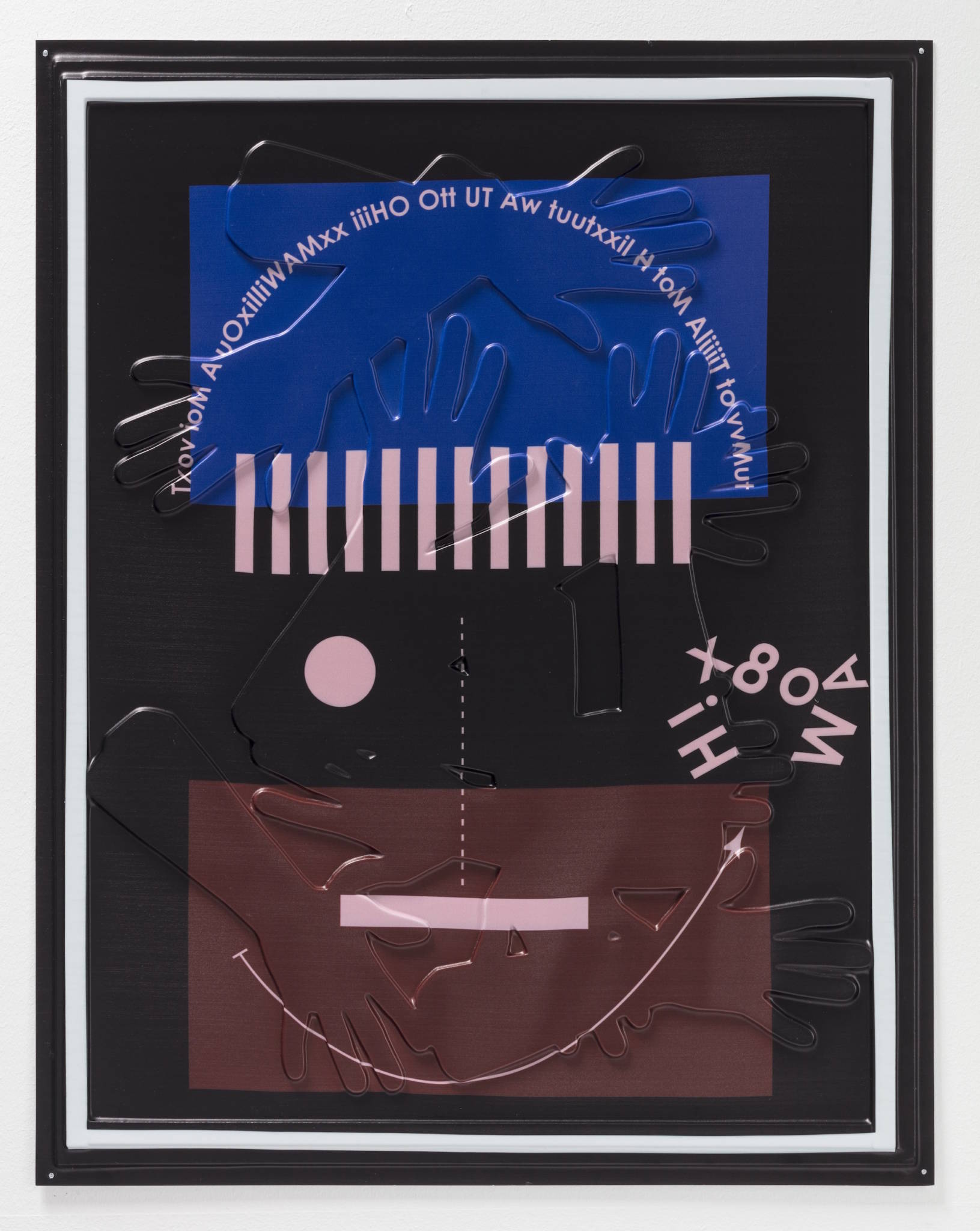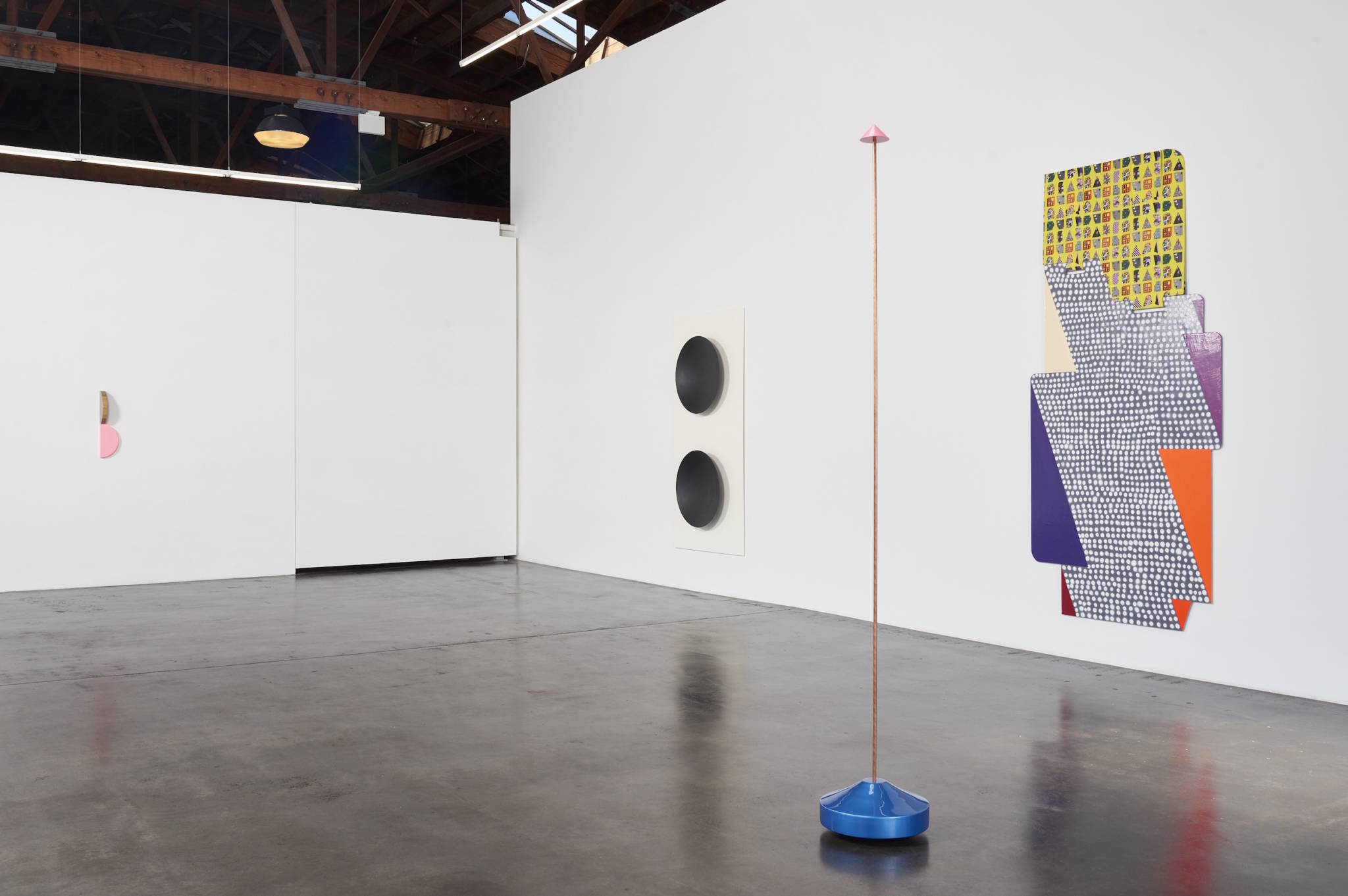Twist is everything you want out of a summer group show. Made up of thoughtful formal juxtapositions, irregular shapes and a hint of silliness, the four-person meditation on geometric abstraction is, in a word, sunny.
Maybe that’s my takeaway because I happened to view the exhibition just after noon on a weekday, when the design firm to which fused (run by Jessica Silverman Gallery) serves as entryway was bustling. I saw not one, but three beautiful and well-behaved dogs moving in and out of the offices. Everyone was smiling.
But there’s more to that response than the circumstances of one viewing. With Twist, curator Barret Lybbert gathers works that refuse to be reduced to any one descriptor. José León Cerrillo’s reliefs, made from vacuum-formed PVC, exist somewhere between poster and nonsensical sign. Reuven Israel’s sculptures look like elegant, functional lamps—but are not. Ruth Root’s “paintings” fit together custom-printed fabrics with painted Plexiglas. And the more one looks at Lisa Williamson’s wall works, the most hard-edged and ostensibly geometric of the bunch, they start to resemble highly abstracted body parts.

What makes the works exciting (in addition to some truly eye-popping color choices) are the unexpected materials throughout. Williamson’s works are not made out of painted wood, as I first thought, but painted powder-coated aluminum. This fact renders the construction of Nerves, an 80-inch tall panel dotted with shapes reminiscent of fluorescent red Devo hats, all the more impressive.
Cerrillo’s reliefs, printed with images of pointing fingers, strings of unintelligible text and bright rectangles of color, hint at wayfinding, but upon closer inspection reveal themselves to be extremely unhelpful. The slight misalignment of image and vacuum-formed surface—or, as in Echo 10, the complete mismatch of the two—makes the lightweight work look like factory rejects or gibberish-filled test prints.

Israel’s three contributions to Twist, two free-standing lamp-like sculptures and one mounted wall piece, benefit from close inspection and different vantage points. Back of the Black Slump, isolated from the rest of the show at the bottom of the gallery’s stairs, stands at over eight feet tall. From below, the painted MDF shape mounted on two slim poles of coppered steel looks like a cartoonish cloud. Take a step back, and it’s a black mountain range.




